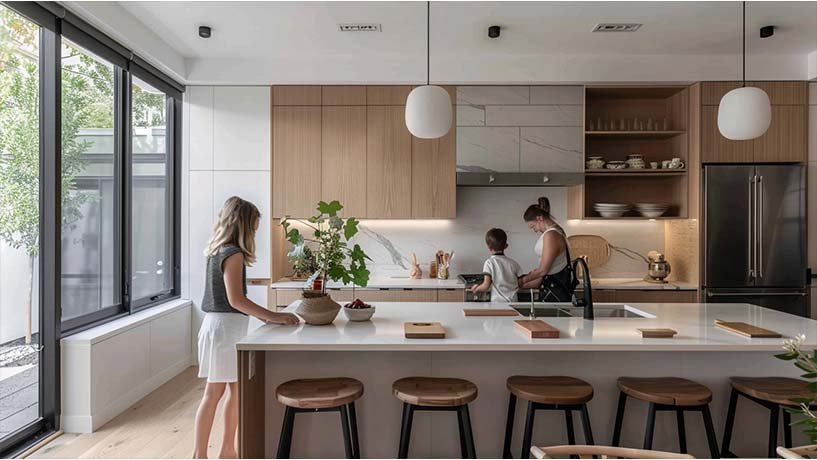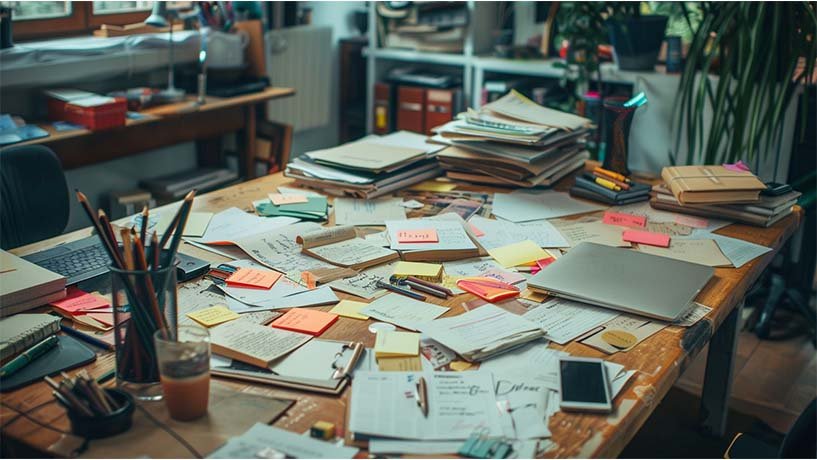Let’s be honest — when your home is a mess, everything feels harder. Things get lost. Tasks pile up. Your brain can’t focus. Even the simplest routines start to feel like uphill battles. And if you’ve ever tried to “get organized” in one massive weekend clean-up, you already know: it rarely lasts.
That’s why I’m a big fan of structured programs. As someone who’s studied motivation, systems, and habit change for years, I’ve learned that real results come from consistency — not intensity. You don’t need a perfect planner or a color-coded closet to feel in control. You need a clear, step-by-step system that removes friction and builds momentum.
Enter Peter Walsh’s 31-Day Get Organized Challenge — a straightforward, low-friction way to bring order to your home, one focused task at a time. Each day, you get a short, actionable video from Peter (a trusted organizing expert with decades of experience), walking you through exactly what to do. No guesswork. No overwhelm. Just one task a day that moves you forward.
This isn’t about creating a Pinterest-perfect home. It’s about making progress you can feel — mentally and physically — with a plan that’s actually designed to work in real life.
Whether you’re drowning in clutter, tired of losing time to disorganization, or just looking for a reset, this challenge is a smart, proven system to help you get back on track — without burning out.
One of the biggest reasons people struggle to get organized is because they try to tackle everything at once. But this challenge flips that on its head — you’re not overhauling your entire home in one weekend. You’re taking small, intentional steps, one day at a time.
Each of the 31 days comes with:
- A short video from Peter Walsh (usually about a minute)
- A single focused task that targets a specific area of your home
- A clear win you can check off — no guesswork, no overwhelm
These aren’t random cleaning prompts. They’re strategically designed to reduce clutter, create order, and build a sustainable system you can maintain long after the challenge ends. It’s not about being perfect — it’s about making daily progress that actually sticks.
Here’s a look at what the daily structure looks like:
- Day 1: Create your donation bin
- Day 2: Declutter your shoes
- Day 3: Clear the floor in one key area
- Day 4: Tidy your underwear drawer
- Day 5: Toss expired bathroom lotions
- Day 6: Organize plates and bowls
- Day 7: Reconnect — send a message or make a call
- Day 8: Declutter your books
- Day 9: Sort holiday decorations
- Day 10: Clear out small appliances you don’t use
- Day 11: Toss outdated media (DVDs, CDs, etc.)
- Day 12: Organize any two shelves
- Day 13: Clean out that one “secret cupboard” we all have
- Day 14: Recycle old phone books and manuals
- Day 15: Midway check-in (reflect + reset)
- Day 16: Declutter your car
- Day 17: Deal with UFOs (UnFinished Objects)
- Day 18: Organize laundry products
- Day 19: Return or toss other people’s stuff
- Day 20: Clear clutter under beds or furniture
- Day 21: Tackle paperwork piles
- Day 22: Delete unnecessary mobile apps
- Day 23: Sort kids’ toys
- Day 24: Focus on one rack in your closet
- Day 25: Declutter under one sink
- Day 26: Tidy your nightstands
- Day 27: Go through your jewelry
- Day 28: Organize food storage containers
- Day 29: Sort table linens
- Day 30: Tidy the garage or shed
- Day 31: Final tidy-up and reflection
- Bonus (Feb 1): Wrap-up + encouragement from Peter
You’ll notice the challenge mixes physical clutter with digital and emotional clutter (like old apps or reconnecting with someone you’ve lost touch with). That’s intentional — and one of the reasons it works so well. It recognizes that getting organized isn’t just about stuff. It’s about your space, your mind, and your habits working together.
The Surprising Impact of One Small Task a Day
We tend to underestimate what small, consistent actions can actually do — especially when it comes to getting organized. But this challenge is proof that less really is more, if you do it with intention.
Each task might seem simple on its own. Clear out a drawer. Delete a few apps. Toss some expired lotion. But something shifts when you stack those small wins, day after day. You start to feel less weighed down — mentally and physically. Your environment becomes easier to manage. You stop wasting time hunting for things or feeling guilty about messes you haven’t tackled yet.
And that’s the real benefit: it’s not just about the cleaner closet or the more organized shelf. It’s about the mental clarity that comes from knowing things are under control. It’s the confidence that comes from following through — and proving to yourself that you can stay consistent without needing to be perfect.
As someone who’s studied behavior and motivation for years, I can tell you this approach works because it builds a loop: action → progress → motivation → more action. The structure removes friction, and the small daily wins reinforce the habit.
If you’ve ever felt like you needed a total reset — not just for your home but for your focus and energy too — this challenge delivers. It’s not flashy. It’s not complicated. But it works.
Simple Tools That Make Staying Organized Easier
You don’t need a bunch of fancy containers to get organized — but let’s be real: the right tools can make a big difference. When you finish a 31-day challenge like this, you’ll start to notice which areas could use better systems. That’s where these tools come in.
As someone who’s tested more than my fair share of organizing products, I always look for things that are simple, affordable, and actually help you keep the momentum going — not just add to the clutter.
Here are a few tried-and-true tools that work:
🧺 Clear Storage Bins
Perfect for grouping items by category and making things easy to find — especially in places like under the sink, bathroom cabinets, and the pantry.
📦 Drawer Organizers
Absolute game changer. Whether it’s your junk drawer, underwear drawer, or desk, having sections keeps everything in its place — and saves you from the daily “where is that thing?!” struggle.
🏷️ Label Maker
Once something’s labeled, it stays where it’s supposed to go. It also makes it easier for everyone else in the house to follow your system without asking you 12 times.
🚪 Over-the-Door Racks
Great for creating vertical storage without installing anything permanent. I use these for bathroom products, shoes, or cleaning supplies.
🔌 Cord Management Kit
Clutter isn’t always physical junk — visual mess like tangled cords can drive you just as nuts. These little cable clips and sleeves make a big difference.
🛒 Slim Rolling Carts
If you’ve got that weird 6-inch gap between your fridge and the wall, or beside your washer and dryer — this is for you. A sneaky-good storage boost in tight spaces.
You don’t need to buy all of this today — but if you notice certain areas keep falling apart, one small product tweak might be all it takes to make the system stick.
How to Start Today (Without Overthinking It)
If you’ve ever felt stuck in the cycle of “I need to get organized” but never actually start — this is your moment.
You don’t need a new planner. You don’t need a free weekend. You don’t even need motivation. You just need a system that makes starting easy — and keeps you moving forward without burning out. That’s exactly what Peter Walsh’s 31-Day Get Organized Challenge delivers.
Here’s how to get going:
- Bookmark this post so you can follow along each day.
- Watch the short video for Day 1 — it takes less than a minute.
- Do just the one task — nothing more. Then stop.
- Repeat tomorrow.
You’ll be surprised by how quickly the clutter starts to lift — and not just in your home. You’ll feel it in your time, your focus, your energy.
And if you want extra support? Grab a few of the tools I listed above. They’re not required, but they can make it easier to maintain the systems you’re building — especially once the challenge ends.
This isn’t about perfection. It’s about progress. Small steps, one day at a time, that add up to something that actually lasts.
So don’t wait for the “perfect time.” Just start.
Common Reasons People Give Up on Getting Organized (And How This Fixes Them)
You’re not lazy. You’re not broken. You just haven’t had the right system — and honestly, most organizing advice out there sets people up to fail.
If you’ve tried to get organized in the past but couldn’t stick with it, chances are one (or more) of these roadblocks got in your way:
🕒 “I don’t have time.”
Totally valid. Most people don’t have hours to dedicate to overhauling their home — and that’s the whole point of this challenge. You’re not tackling everything at once. You’re spending maybe 10–15 minutes a day on one clear, manageable task. That’s it.
This format is built for busy people. You can do it before work, after dinner, or even while the coffee’s brewing.
😖 “I get overwhelmed and don’t know where to start.”
Decision fatigue is real — and one of the biggest barriers to getting organized. When you look at your entire house, it’s paralyzing. That’s why this challenge removes the thinking from the process. You’re told exactly what to do each day, with no second-guessing.
🔁 “I’ve tried before, but I never follow through.”
This isn’t a one-size-fits-all method that expects you to do everything perfectly. It’s flexible. Miss a day? You’re not behind. Just pick up where you left off.
Consistency is more important than perfection — and this challenge is designed to help you build momentum through small wins, not guilt you into quitting.
💸 “I can’t afford to buy a bunch of organizing stuff.”
You don’t have to. In fact, one of the early tasks is just creating a donation bin — that’s it. Most of the progress you’ll make comes from removing clutter, not buying containers.
If you do want to invest in tools later, you can do it strategically (and I listed a few budget-friendly favorites earlier in this post).
If you’ve failed at getting organized before, it’s not because you weren’t motivated — it’s because the system wasn’t built to work with your life. This one is.
FAQ: What You Need to Know Before Starting
❓ What if I miss a day?
You’re not behind — just pick up where you left off. This challenge isn’t about perfection. Life happens. What matters most is sticking with it over time. If you miss a day (or even a few), just restart from your last completed task. You can also turn it into a weekend-only or weekly challenge if daily doesn’t work for your schedule.
❓ Can I start this challenge anytime, or does it have to be in January?
You can start it anytime. While the original challenge was structured around January (ending Feb 1), the content is evergreen. Whether it’s the start of the year, spring cleaning season, or just a random Tuesday, it still works. Organization doesn’t care what the calendar says.
❓ How long does each task take?
Most tasks take around 10 to 15 minutes. A few might go a little longer if you decide to go deeper — but that’s totally optional. The goal isn’t to do it perfectly. The goal is to take one step forward each day.
❓ Is this challenge good for families or roommates?
Absolutely. You can do it solo or get others involved. Some readers have used it as a family reset — assigning different tasks to different people or doing it together in the evenings. It’s a great way to create shared ownership of your space.
❓ Do I need to buy organizing supplies before I start?
Nope. In fact, most of the early tasks involve removing stuff, not organizing it with bins and baskets. If you want to invest in some tools later (like drawer dividers or clear storage bins), go for it — but you can get 90% of the benefit without spending a dime.
❓ Is there a printable version of the challenge?
I’m working on it — and if you’d find that helpful, let me know. A printable checklist or tracker is a great way to visually see your progress and stay motivated.
Digital Decluttering: Don’t Skip This Step
We often think of clutter as just physical stuff — overflowing drawers, chaotic closets, the dreaded junk pile on the dining table. But digital clutter can be just as draining, and it’s often the most overlooked.
That’s why Peter Walsh includes tasks like clearing out mobile apps and tackling paperwork — because mental space matters just as much as physical space.
Think about it:
- Do you waste time swiping past dozens of apps you don’t use?
- Is your email inbox a stress-inducing black hole?
- Do you keep digital photos, downloads, or notes you never actually look at?
All of that adds up. It creates visual noise, decision fatigue, and background stress — even if you don’t fully realize it.
Here are a few small ways to declutter your digital life during the challenge:
- Uninstall unused apps (Day 22 of the challenge covers this)
- Delete screenshots, duplicate photos, or outdated files
- Organize your desktop and rename folders
- Create inbox rules or unsubscribe from junk email
- Back up important files to cloud storage and delete local clutter
These tasks are quick but powerful. They don’t just clear your devices — they clear your head. And just like physical organizing, digital decluttering creates more space to focus, think clearly, and feel in control.
You don’t have to go full “digital detox.” But even a little cleanup can go a long way — and this challenge builds it right in.




